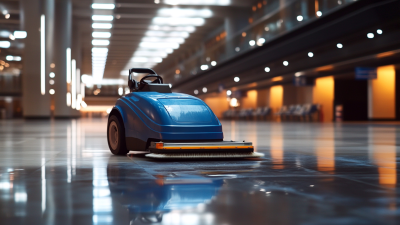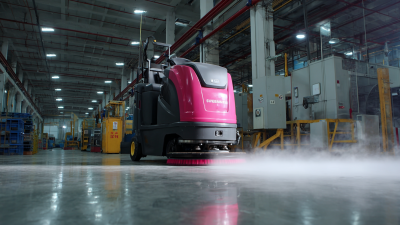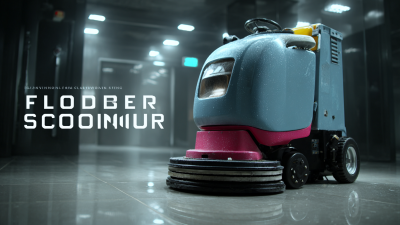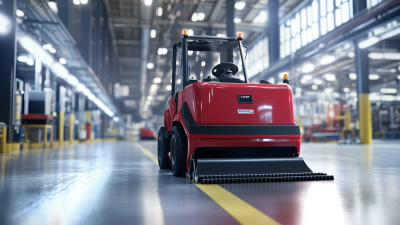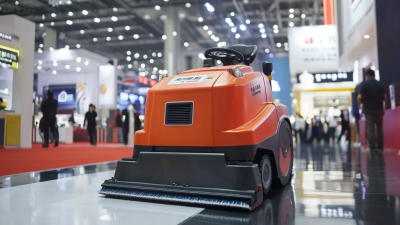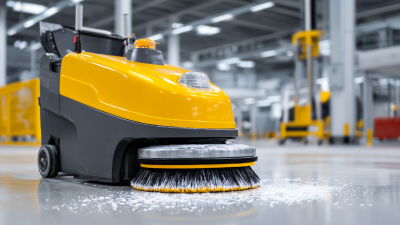Inquiry
Form loading...
Maintaining a Riding Floor Scrubber is essential for ensuring optimal performance and prolonging the lifespan of the equipment. According to a recent industry report by the Cleaning Equipment Manufacturers Association (CEMA), properly maintained floor scrubbers can improve cleaning efficiency by up to 30% and significantly reduce downtime. With facilities increasingly seeking cost-effective solutions, the importance of regular maintenance cannot be overstated. In fact, research indicates that routine maintenance can lead to a 25% decrease in repair costs over time. By implementing efficient maintenance practices, operators not only enhance the performance of their Riding Floor Scrubber but also contribute to a cleaner and safer environment. Understanding and executing these practices can make a substantial difference in achieving operational excellence and maximizing return on investment.
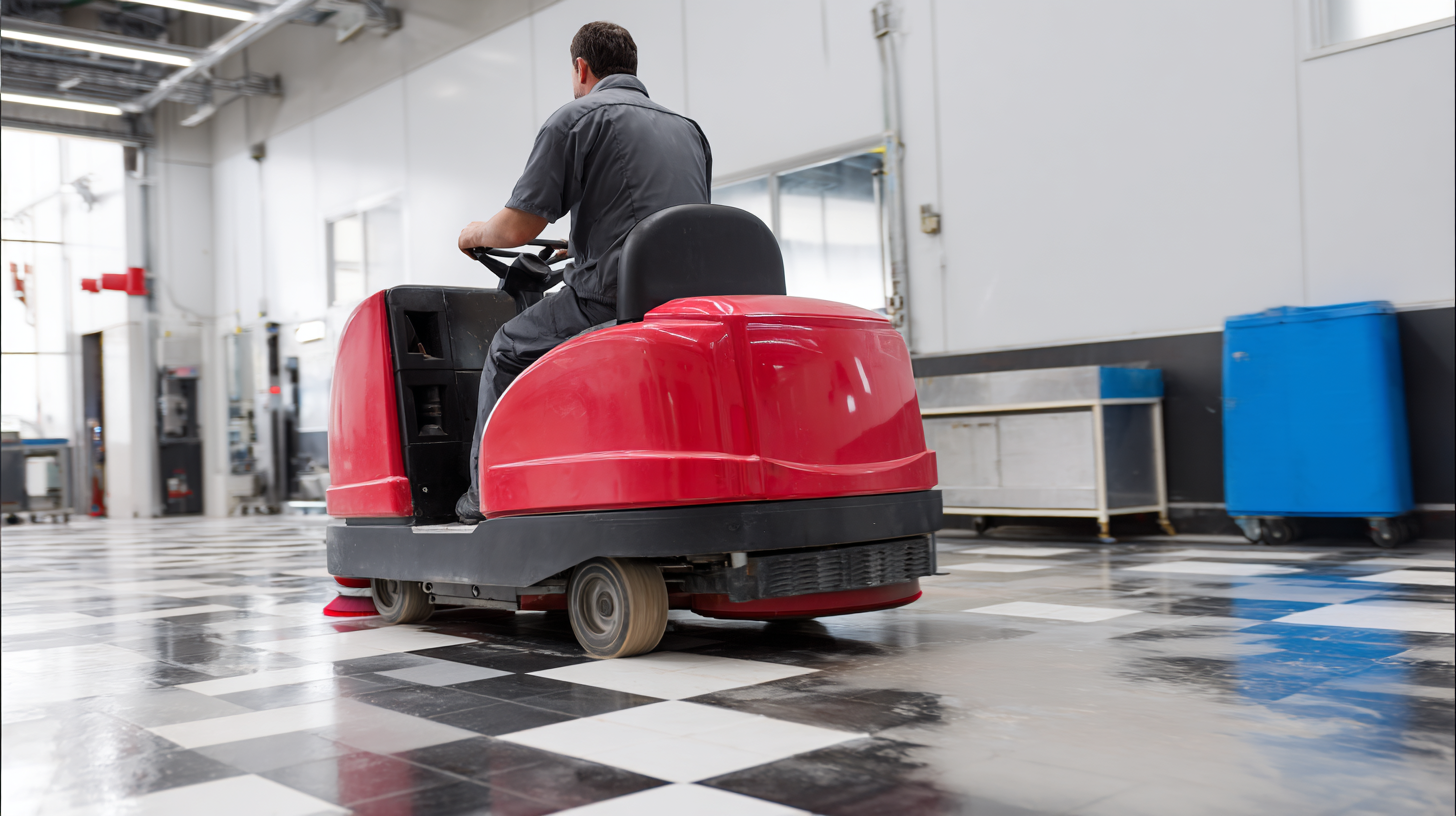
Daily maintenance of riding floor scrubbers is crucial for ensuring optimal performance and longevity. Key tasks include checking the battery levels, inspecting and cleaning the brushes, and ensuring that the water and detergent tanks are filled appropriately. According to recent industry reports, regular maintenance can improve the equipment's efficiency by up to 30%, which is vital in today's fast-paced cleaning environments, particularly in healthcare facilities where cleanliness standards have significantly evolved since the COVID-19 pandemic.
With the increased focus on hygiene in hospitals and essential businesses, the importance of effective floor maintenance has never been clearer. Directly correlating with the pandemic's influence, facilities are investing in advanced cleaning technologies, including robotic floor scrubbers. Studies show that these machines can reduce labor costs by approximately 20% while providing consistent cleaning results that meet the heightened standards for cleanliness. Therefore, implementing a robust daily maintenance routine ensures that these advanced machines operate optimally while contributing to overall facility hygiene management.
Maintaining your riding floor scrubber is crucial for optimal performance and longevity. A key component of this maintenance is a thorough weekly inspection checklist, which can significantly enhance efficiency and cleaning effectiveness. According to a study by the Cleaning Industry Research Institute (CIRI), regular maintenance can improve machine performance by up to 20%, reducing downtime and operational costs. When checking your scrubber weekly, focus on essential items such as the condition of the squeegee blades, the vacuum motor’s performance, and the brush wear. These elements play a vital role in ensuring that the machine operates at peak efficiency.
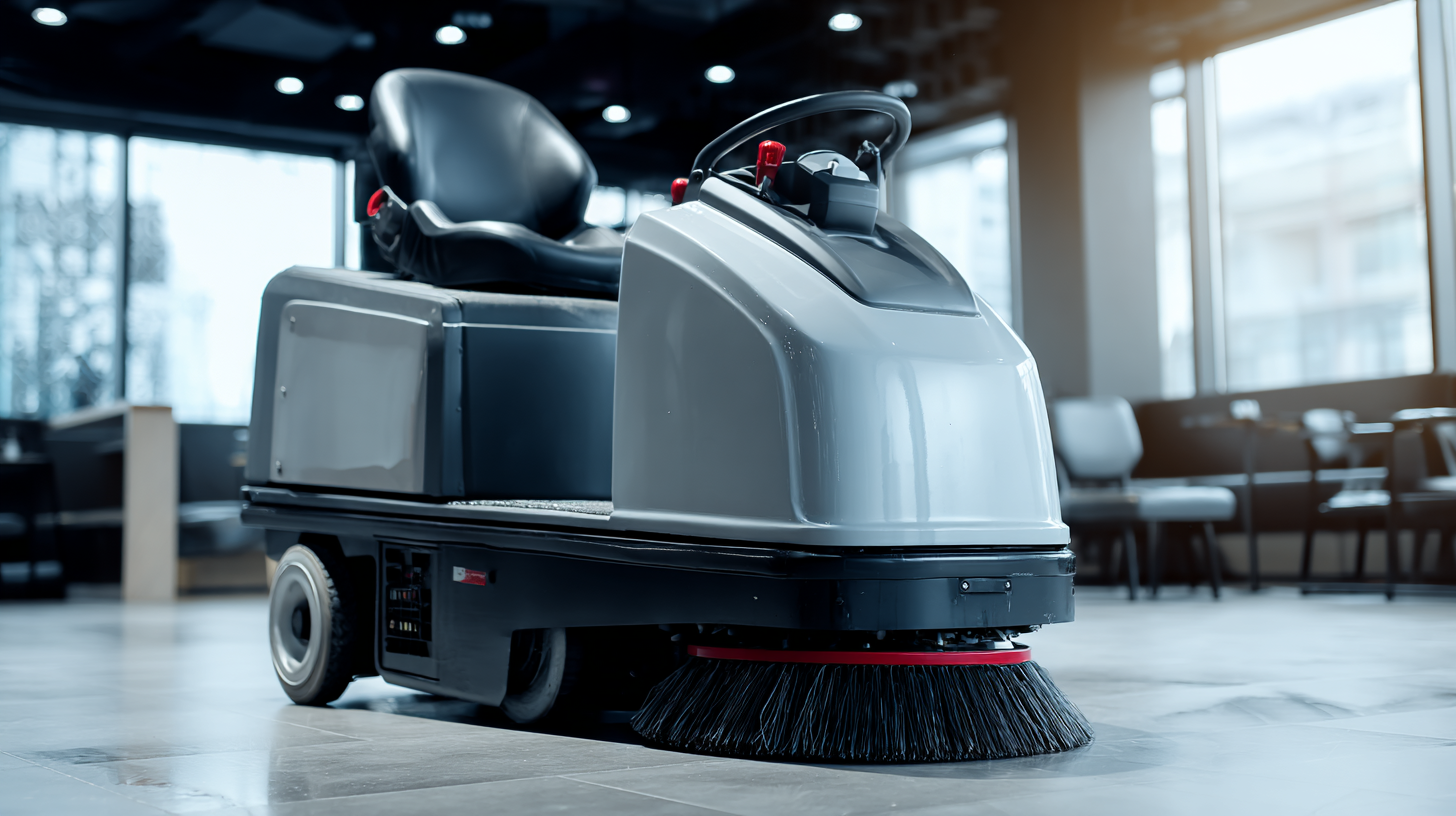
In addition to mechanical checks, monitoring the solution tanks and filters is essential for maintaining cleaning effectiveness. The same CIRI report indicates that neglected tanks can lead to a 30% decrease in cleaning performance due to contamination. Ensure that the solution is properly diluted according to manufacturer specifications to maximize cleaning power while minimizing resource waste. Furthermore, inspecting battery levels and connections weekly can prevent performance issues and extend the equipment's lifespan, keeping your scrubber running smoothly and efficiently in the long run.
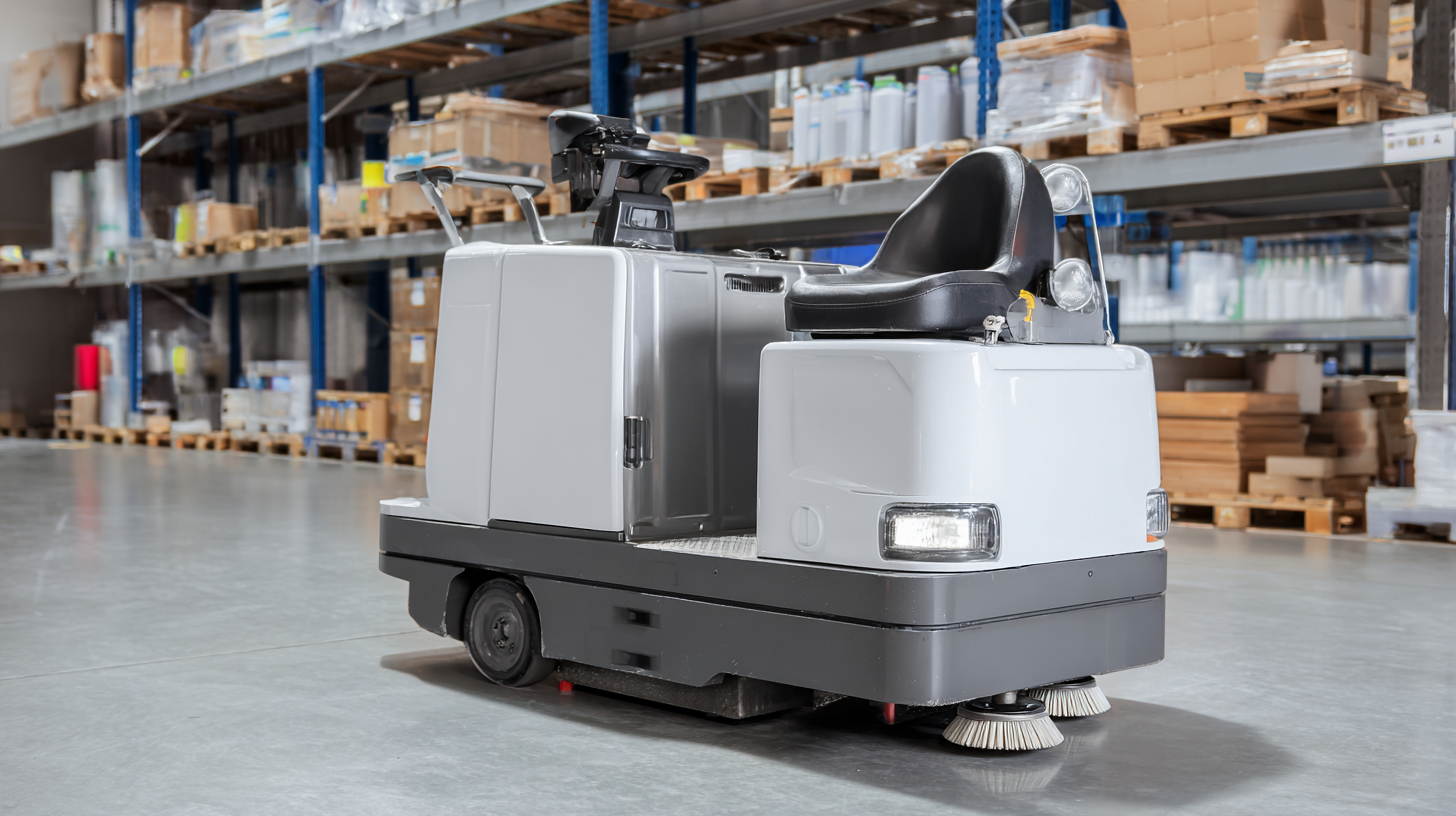 To ensure your riding floor scrubber operates at peak efficiency, it's essential to focus on the maintenance of scrubber brushes. Regular cleaning of the brushes is a critical practice that prevents the buildup of dirt and grime, which can hinder performance. After each use, brushes should be rinsed thoroughly to remove any debris. Additionally, inspect the brushes for signs of wear and tear, as worn or damaged brushes can result in ineffective cleaning and may even scratch the surface being cleaned.
To ensure your riding floor scrubber operates at peak efficiency, it's essential to focus on the maintenance of scrubber brushes. Regular cleaning of the brushes is a critical practice that prevents the buildup of dirt and grime, which can hinder performance. After each use, brushes should be rinsed thoroughly to remove any debris. Additionally, inspect the brushes for signs of wear and tear, as worn or damaged brushes can result in ineffective cleaning and may even scratch the surface being cleaned.
When it comes time to replace your scrubber brushes, selecting the right type for your specific cleaning tasks is crucial. Different brushes are designed for various surfaces and cleaning applications, such as soft bristles for delicate floors and stiff bristles for tougher surfaces. Always refer to the manufacturer’s guidelines to ensure compatibility and optimal performance. Regularly scheduled replacements, typically every few months depending on usage, will help maintain the cleaning efficiency and longevity of your riding floor scrubber. Proper brush maintenance directly contributes to achieving the highest cleaning standards and reducing operational costs.
Troubleshooting common issues in riding floor scrubbers is essential for maintaining their optimal performance. Just like troubleshooting a washing machine that fails to clean or spin properly, identifying the root causes of scrubber malfunctions can save time and resources. Common problems include insufficient suction, inconsistent cleaning, and mechanical failures. These issues can often be traced back to simple factors such as clogged filters, worn brushes, or improper maintenance routines.
To effectively address these challenges, operators should develop a regular inspection schedule. Begin by checking the suction hosing for obstructions and ensuring that all parts are clean and free from debris. If the scrubber leaves streaks or does not properly clean the floor, inspect the brushes and pads for wear and replace them as necessary. Additionally, monitoring water and chemical levels can prevent performance dips. By systematically troubleshooting these common issues, users can ensure their riding floor scrubbers continue to operate efficiently, much like the design-oriented solutions emerging from recent design fairs that address everyday problems.
| Issue | Possible Causes | Recommended Solutions | Frequency of Maintenance |
|---|---|---|---|
| Poor Scrubbing Performance | Worn brushes, dirty pads, low solution level | Replace brushes, clean pads, check solution level | Weekly |
| Streaking on Floor | Incorrect cleaning solution, dirty recovery tank | Use appropriate solution, clean tank | Bi-weekly |
| Battery Issues | Low charge, corroded terminals | Charge battery, clean terminals | Monthly |
| Water Leakage | Damaged seals, cracked tanks | Replace seals, repair or replace tanks | As needed |
| Directional Issues | Misaligned wheels, worn drive belt | Realign wheels, replace drive belt | Monthly |
Maintaining your riding floor scrubber is crucial for maximizing its lifespan and ensuring peak performance. One of the most effective ways to extend the life of your equipment is by implementing a regular maintenance schedule. This includes daily cleaning of the machine after use, ensuring that any debris is removed, and checking the water and solution levels. In addition, inspect the brushes and pads for wear and replace them as necessary. This proactive approach helps prevent more significant issues that could lead to costly repairs or downtime.
Another important aspect of maintenance is ensuring that all components, including filters and batteries, are functioning optimally. Regularly replacing filters will help maintain suction power, while proper battery care—such as regular charging and cleaning of terminals—can significantly enhance battery life. Additionally, keep an eye on the scrubber's performance during use. If you notice any changes, such as reduced cleaning efficiency or unusual noises, address these issues immediately. By taking these steps, you can not only prolong the life of your riding floor scrubber but also ensure that it operates at its best, contributing to cleaner and safer environments.
This bar chart illustrates the estimated time spent on different maintenance activities for riding floor scrubbers. Regular maintenance is crucial for optimal performance and to extend the lifespan of the equipment.
